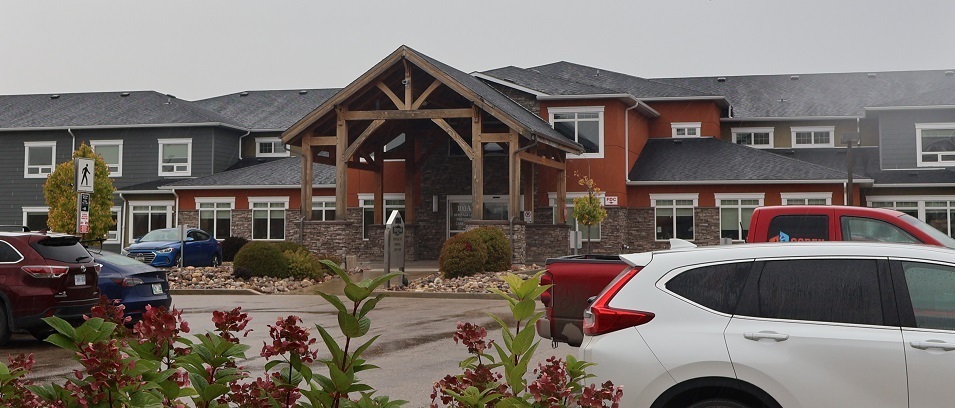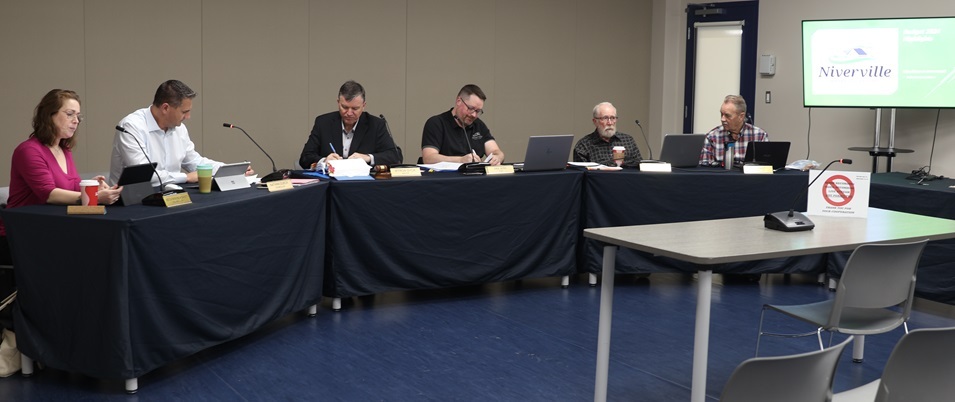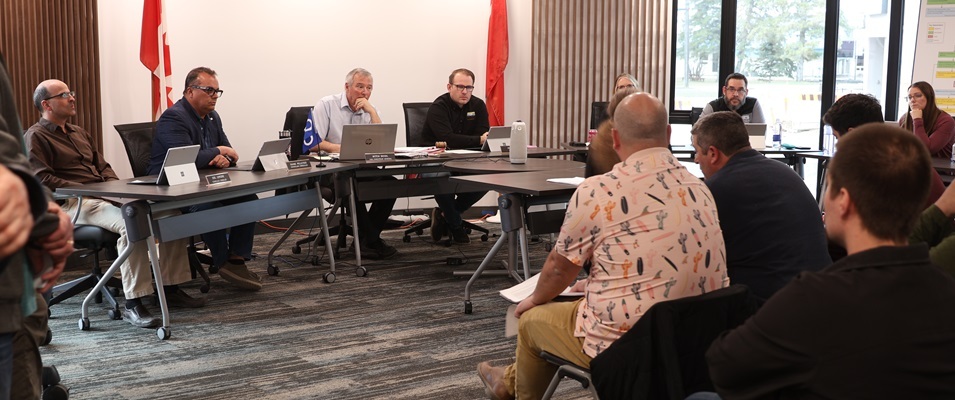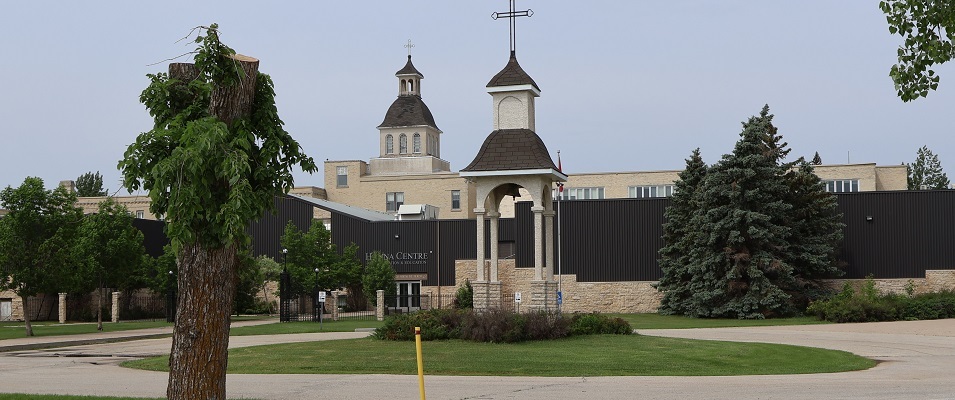
The vast and open Canadian landscape, in all its grandeur, has seen its share of innovation to make this great country navigable from shore to shore, and at monumental cost. First came the railway, followed by highways and roads, opening access to some of the most remote parts of the country.
In the late twentieth century, a new highway rolled out: the information highway, connecting Canadians to the entire globe. Since that time, the internet has had a revolutionary impact on the way we live, work, learn, shop, and communicate. So revolutionary, in fact, that the Canadian Radio-television and Telecommunications Commission (CRTC) made an announcement in December 2016 declaring internet access a basic service to which all Canadians have a right.
“The future of our economy, our prosperity and our society—indeed, the future of every citizen—requires us to set ambitious goals, and to get on with connecting all Canadians for the twenty-first century,” said CRTC Chair Jean-Pierre Blais at a news conference in Gatineau, Quebec.
This announcement followed on the heels of a 2016 speech by President Obama in which he proclaimed, “Today high-speed broadband is not a luxury, it’s a necessity.”
Facebook CEO Mark Zuckerberg previously addressed the United Nations, calling internet access “a basic human right, like access to healthcare or water.”
The CRTC’s announcement was in response to the federal government’s recent budget commitment to spend up to $500 million over the next five years to expand high-speed internet services to rural and remote areas of Canada that have long been under-served.
While the majority of Canadians have access to the most basic of internet connections, rural Canada has lagged far behind in the technology race, relying on outdated dial-up or DSL (digital subscriber line) services that travel through archaic copper telephone lines and date back to the early days of internet use. These forerunners of today’s high-speed internet connections are problematic, making file uploading slow and connections spotty.
Remote areas, such as many of Canada’s First Nations reserves, are especially vulnerable to poor internet options with long data-delivery delays. This can further leave them in a state of perpetual isolation. Without a connection to the outside world, teenage suicide, despondency, and mental health issues thrive while higher education, improved health services, and a wider pool of job options are virtually inaccessible.
“You shouldn’t have to leave the reserve to have dreams,” says Bruce Buffalo of the Maskwacis reserve in a documentary called Broadband Bruce: Fighting Canada’s Digital Divide. The filmmaker, San San F. Young, adds, “Access to the internet can end the sense of isolation on reserves and empower problem-solvers from within these communities.”
The Rural Development Institute (RDI) at Brandon University prepared a study to present to the CRTC before their ruling.
“The [internet] access in rural Manitoba is not enough,” said Wayne Kelly, RDI research associate. He adds that there are a lot of holes in Manitoba where people on farms and in valleys might be too far away from the nearest community or broadband tower to receive access.
Kelly warned, though, that new government initiative grants allowing for one-time infrastructure installation won’t be enough to meet the maintenance requirements down the road.
“It’s not something you can do once,” Kelly said. “You’re going to have to continually improve and enhance this infrastructure.”
An Ookla net index report from 2014 showed that the average upload speeds (the rate at which data is sent from your computer) pits Manitoba as the second slowest province in Canada at 2.37 megabits per second (Mbps), trailed only by the Northwest Territories. New Brunswick had the fastest upload speed at 10.66 Mbps.
Canada as a whole doesn’t fare much better. In 2014, our nation ranked fifty-third in the world overall. Countries that have faster internet speeds include Kazakhstan, Mongolia, Kyrgyzstan, and Mexico.
Competition Is Key
Along with the promise of financial funding for internet infrastructure to rural and remote Canada, the CRTC also set guidelines on the quality of services citizens should have access to. Their target: 50 Mbps download speed and 10 Mbps upload speed.
Let’s put that into perspective. If you’re trying to download a two-hour movie using DSL, which might average out to a five- to seven-Mbps download speed, you would need about an hour. On a fibre-optic network running at about 100 Mbps, the same movie would download in four minutes.
Swift High-Speed Internet is one of a number of smaller-scale internet service providers (ISPs) working hard to deliver quality, affordable internet services to rural Manitobans. But they run up against steep odds, including the government’s new initiative.
“Canada is a very large country and, as we see in Manitoba’s southeast, there is a lot of distance between population centres,” says Evan Schroeder of Swift. “The cost of infrastructure between these centres is very high in both installing and in maintaining, which leads to fewer competitors willing to take on the investment risk.”
With vast areas of low-population density, the proverbial “cash cow” doesn’t graze here. Big players like Shaw, Bell, Rogers, and their prospective investors see little potential earning capacity in the rural southeast.
For decades, Manitoba Telecom Services (MTS) held a monopoly on our region’s internet services. The corporation already had all of the telephone infrastructure it required to offer rudimentary internet service. As technologies evolved, demand for better internet connections grew and competition moved into the more densely populated areas.
Niverville is one such example. As the low-speed DSL service of MTS approached the end of its life cycle, a competitor moved in—in Niverville’s case, Shaw—offering TV, phone, and internet bundling packages, successfully winning over a large contingent of MTS’s clients. This threat to MTS resulted in a reinvestment in their original infrastructure which, before competition, there had been no incentive to provide. They came back offering fibre-optic solutions with higher-speed capabilities at promotional pricing, recapturing many of their previous clients.
“Clients win, but only after third-party investment has initiated the cycle,” says Schroeder. “So where new investment is, a chance for all services to improve becomes a reality. Niverville, Steinbach, Lorette, and Ste. Anne have benefited from this on a wide scale while more remote towns like Grunthal, La Broquerie, and Kleefeld still only have one wired competitor.”
Rural residents just outside of competitive centres like Niverville should conceivably be able to benefit from their proximity, but little profit is realized when infrastructure needs to be stretched even a mile over a low-populated area.
“When density falls below whatever internal threshold [minimum population requirements] an ISP has set, government incentives or grants are required to develop those services,” says Schroeder.
He adds, though, that competitors rarely move in when other ISPs have had access to subsidized infrastructure which should, conceivably, allow them to offer customers reduced rates.
Cue wireless technology. With the impracticality of wired internet across vast open spaces, wireless technology is hitting the rural landscape. Smaller ISPs, such as Swift and 3T Solutions Inc., are setting up towers and remote radio equipment at their clients’ rural residences, farms, businesses, and business parks, offering a solution superior to the alternative: engineering, drilling, trenching, and working around existing infrastructure and underground service lines. As expected, the cost of wireless is far lower than wired solutions in hard-to-reach areas. It’s still a far cry, though, from the competitively priced options available in high-density areas.
For this reason, the Canadian government is offering grants to companies like NetSet and Xplornet to build wireless infrastructure where DSL, or worse, is the only option.
“Initially, it results in better services for the locals in the new wireless regions, but ultimately it will stunt growth in remote towns and cities as the necessary competition to drive down monthly rates will be further from reality at that point,” says Schroeder.
Rob Dolinski, owner of 3T Solutions Inc., says that, though his company provides exceptional services for wireless solutions throughout the southeast, the federal government’s grant provisions disqualify 3T from being able to access the grants.
“Unfortunately, the government is paying other larger companies to compete with us,” says Dolinski. “[Having] private investors and a large net worth positions them to apply for the grant money. [Essentially] my taxes are paying for my competition to better their business.”
Dolinski adds that the federal government has created maps of areas that are eligible for grant monies, but in southeast Manitoba the area isn’t extensive. Extreme restrictions also apply to the portions of infrastructure that the feds will fund.
“After reviewing the maps, we did not find any regions within our service area that were eligible for grants,” Dolinski says. He points out that although there was one location northeast of Winnipeg, it only provided for certain portions of the infrastructure install. “[The] overall build costs were staggering and was not a good fit for our company, as we would be overextending ourselves. Being a regional ISP with limited [financial] resources, we prefer to focus our efforts within our region to ensure we provide exceptional service and product.”
One Manitoba Community’s Answer to Internet Inferiority
Some communities, like Winkler, the fastest growing city in Manitoba, still only have access to one wired ISP. Seeking to change this, Valley Internet Service Provider (VISP) negotiated with Winkler’s city council to fund a wired fibre-optic line that will allow VISP to compete in the area.
“Internet speed has been a constant sore spot in and around Winkler,” says Winkler mayor Martin Harder. “This is why we [help] other providers start up, like VISP. As one resident put it, if I want to upload a file, I start it, go for coffee, and hope it is done when I get back.”
VISP is promising to move the city from its current average of five Mbps to 1,000 Mbps. The city is paying the internet firm $500,000 to hook up every civic building. It’s further donating approximately 1.5 acres of land for the company’s new headquarters and data centre. In return, the company will provide free installation to every house and building in the city.
“The [local] economic environment will receive a huge boost given this new system which benefits every taxpayer,” says Harder. “Therefore it is an investment on their behalf.”
The cost of this project is steep since Bell MTS maintains a monopoly on all telephone line infrastructure, requiring VISP to install vast lengths of new cable. Still, public opinion is usually in favour of improved internet at a subsidized cost and typically results in a large buy-in from residents.
“There are only a handful of towns and cities across the country that have undertaken this type of project, and I can only recall one successful campaign of the same in Canada,” says Schroeder. “Stakes are very high due to the incredible cost of the infrastructure hardware, the staff and safety training, the engineering and permitting, and the time it takes to roll out without profit during that period.”
It’s a win for the residents of Winkler to have options that they never had before. However, Bell MTS or another competitor may decide to amp up their strategies should they lose a significant number of clients to the new competitor. After all, improved services and discounted pricing are well within their financial scope. This could result in further client turnaround, leaving a company like VISP, its investors, and the city with huge losses of capital investment which are not being utilized to their full potential.
VISP was unable to make time for comment to The Citizen.
Who Regulates the Pricing?
While the government is working to address concerns about internet access for rural and remote Canadians, affordability remains in question.
“The [CRTC’s] approach to affordability has always been through market forces—to make sure we have enough competitors, we have informed consumers that are working in a dynamic marketplace,” Blais said.
Yet where competitive markets don’t exist, as is the case in rural Manitoba, little is being done to regulate costs.
Another obstruction looms over the affordability factor like a black cloud: metering. Metering, which is used by some ISPs in rural areas, means creating low caps on internet usage and then enforcing hefty overage charges when customers exceed the caps.
In some cases, the very ISPs that have received government grants are guilty of this. In essence, they are overcharging the customer for use of the infrastructure the customer has already paid for through tax dollars.
Schroeder says that rural customers should be appalled at this. He cites the example of NetSet, an ISP out of Brandon that received approximately $10 million from the government over a three-year period to develop their rural network. Even after the grant, the company charges their clients up to $150 per month in user fees, capping the usage off at 240 gigabits (Gb) per month and charging extra for overage fees—in this case, an extra $25 per 15 Gb over.
At the same time, a customer in Niverville can use Bell MTS or Shaw, delivering user fees of $72 to $80 per month with a cap of 1,000 Gb. At that point warnings occur, allowing the user an opportunity to discontinue use and prevent overage fees.
“A rural customer benefiting from government subsidized infrastructure pays double per month for the same speed and still has to pay overage charges, some up to $600 per month,” adds Schroeder. “It’s not just remote communities being metered, it’s happening within just a mile or two of Niverville.”
NetSet Communications did not respond for comment.
According to Schroeder, it’s important to check your ISP’s pricing strategies before signing on. Few outside of Swift and 3T Systems, he says, offer truly unlimited packages with no usage caps or overage warnings.
He also notes that there is more to quality internet services than just speed in Mbps. The latency of your internet service can also be a concern. Even with high-speed internet services, latency can make your internet feel slow. High latency occurs most often with satellite internet connections and is something you should be prepared to ask your provider about.
“Very high latency levels remove any chance that you can play online games. Skype and Facetime become horrible experiences,” says Schroeder.
The next five years will provide an interesting look at the effectiveness of the CRTC’s initiative to roll out better internet services to rural and remote Manitobans, both in terms of technological advancements and competitive pricing options.
Possibly just as important, though, is how the ISPs receiving the grants will choose to disperse the subsidized infrastructure geographically. With so much discretion left to the government-assisted ISPs, will $500 million be enough?




















